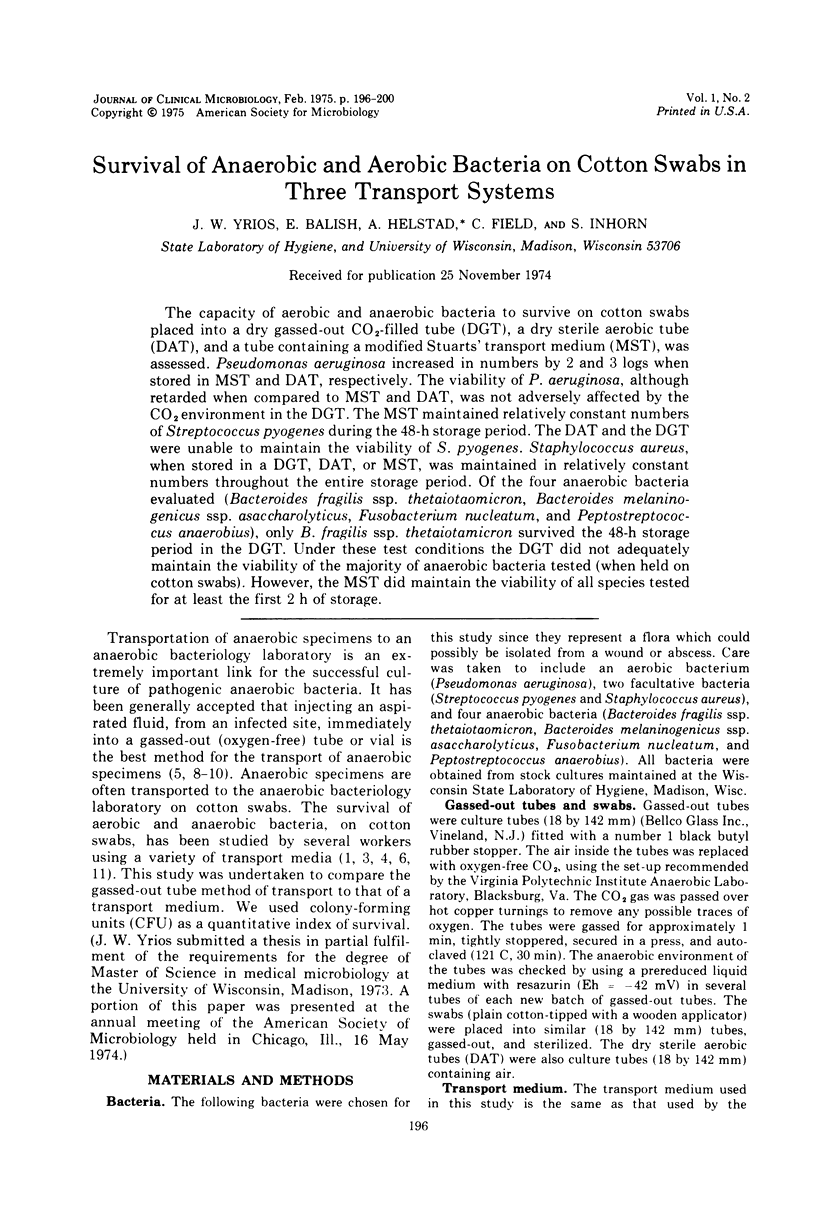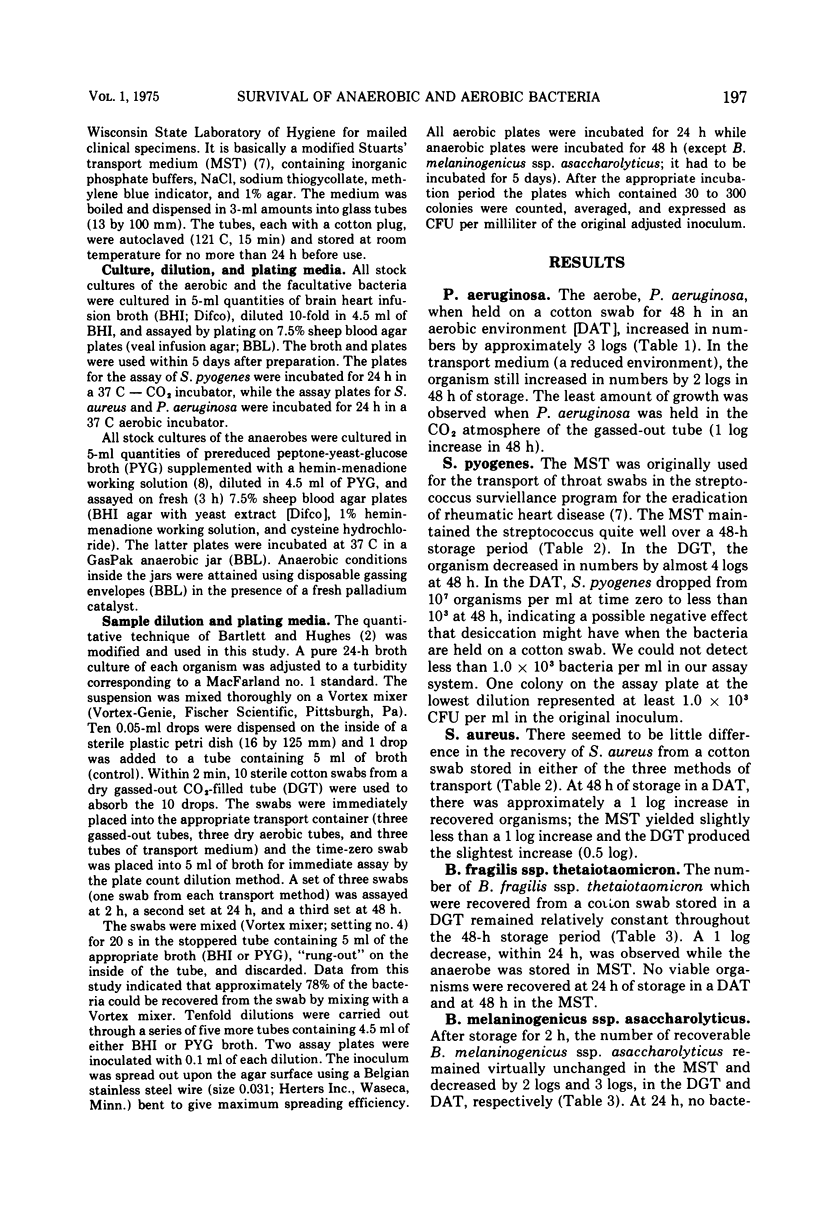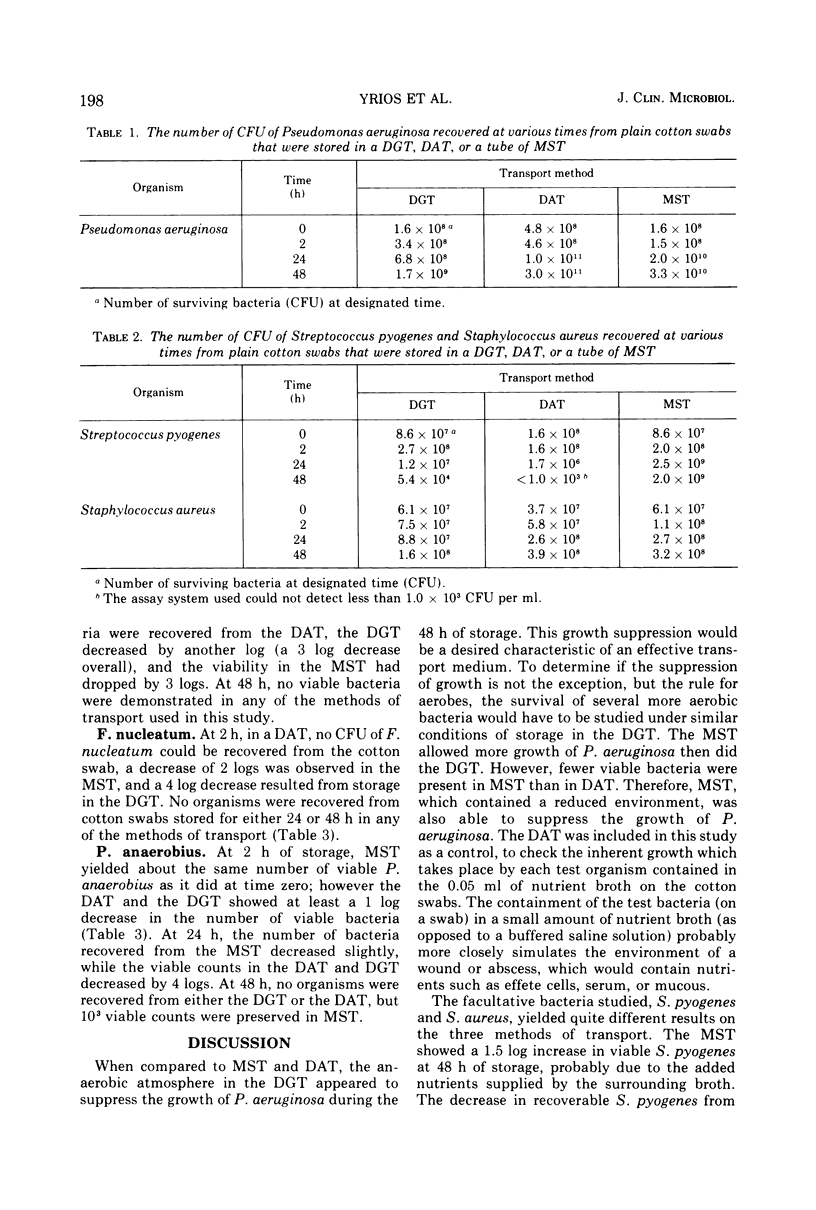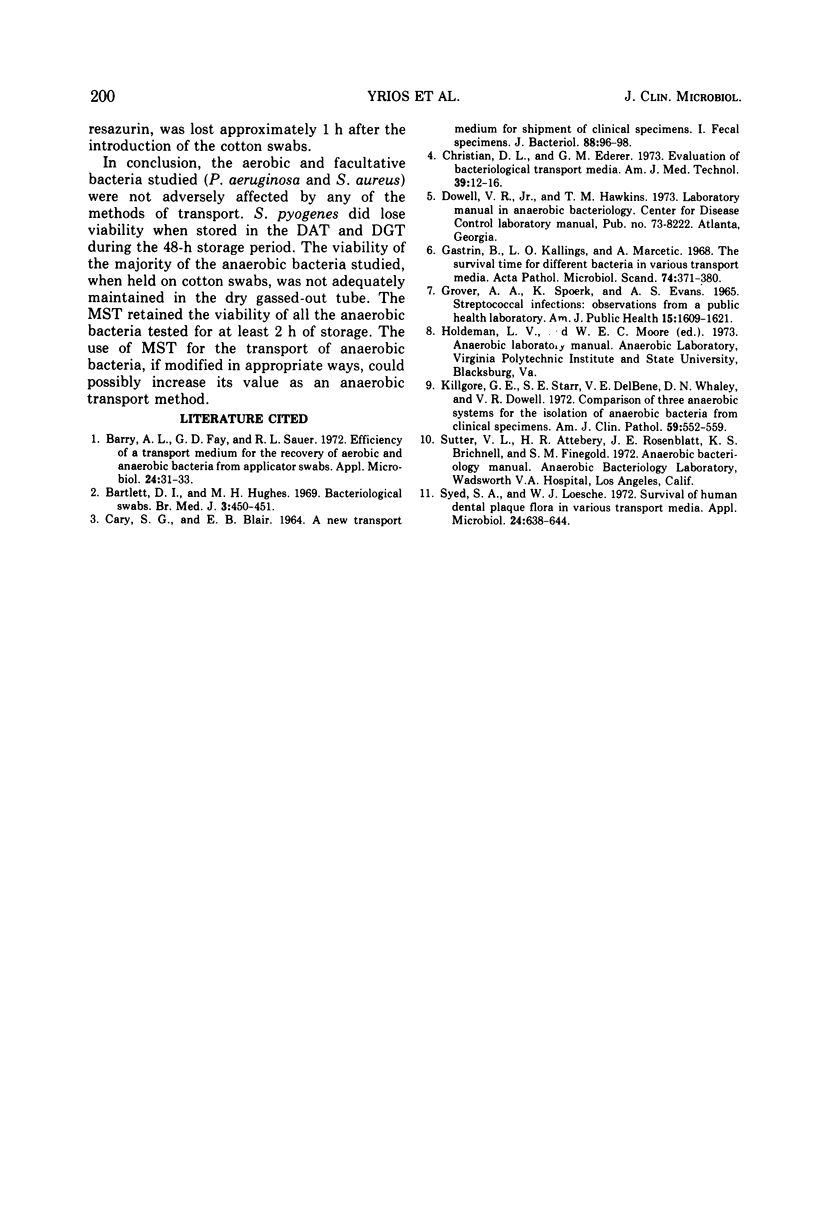Abstract
The capacity of aerobic and anaerobic bacteria to survive on cotton swabs placed into a dry gassed-out CO2-filled tube (DGT), dry sterile aerobic tube (DAT), and a tube containing a modified Stuarts' transport medium (MST), was assessed. Pseudomonas aeruginosa increased in numbers by 2 and 3 logs when stored in MST and DAT, respectively. The viability of P. aeruginosa, although retarded when compared to MSA and DAT, was not adversely affected by the CO2 environment in the DGT. The MST maintained relatively constant numbers of Streptococcus pyogenes during the 48-h storage period. The DAT and the DGT were unable to maintain the viability of S. pyogenes. Staphylococcus aureus, when stored in a DGT, DAT, or MST, was maintained in relatively constant numbers throughout the entire storage period. Of the four anaerobic bacteria evaluated (Bacteroides fragilis ssp. thetaiotaomicron, Bacteroides melaninogenicus ssp. asaccharolyticus, Fusobacterium nucleatum, and Peptostreptococcus anaerobius), only B. fragilis ssp. thetaiotamicron survived the 48-h storage period in the DGT. Under these test conditions the DGT did not adequately maintain the viability of the majority of anaerobic bacteria tested (when held on cotton swabs). However, the MST did maintain the viability of all species tested for at least the first 2 h of storage.
Full text
PDF




Selected References
These references are in PubMed. This may not be the complete list of references from this article.
- Barry A. L., Fay G. D., Sauer R. L. Efficiency of a transport medium for the recovery of aerobic and anaerobic bacteria from applicator swabs. Appl Microbiol. 1972 Jul;24(1):31–33. doi: 10.1128/am.24.1.31-33.1972. [DOI] [PMC free article] [PubMed] [Google Scholar]
- Bartlett D. I., Hughes M. H. Bacteriological swabs. Br Med J. 1969 Aug 23;3(5668):450–451. doi: 10.1136/bmj.3.5668.450. [DOI] [PMC free article] [PubMed] [Google Scholar]
- CARY S. G., BLAIR E. B. NEW TRANSPORT MEDIUM FOR SHIPMENT OF CLINICAL SPECIMENS. I. FECAL SPECIMENS. J Bacteriol. 1964 Jul;88:96–98. doi: 10.1128/jb.88.1.96-98.1964. [DOI] [PMC free article] [PubMed] [Google Scholar]
- Christian D. L., Ederer G. M. Evaluation of bacteriological transport media. Am J Med Technol. 1973 Jan;39(1):12–16. [PubMed] [Google Scholar]
- Grover A. A., Spoerk K., Evans A. S. Streptococcal infections: observations from a public health laboratory. Am J Public Health Nations Health. 1965 Oct;55(10):1609–1621. doi: 10.2105/ajph.55.10.1609. [DOI] [PMC free article] [PubMed] [Google Scholar]
- Gästrin B., Kallings L. O., Marcetic A. The survival time for different bacteria in various transport media. Acta Pathol Microbiol Scand. 1968;74(3):371–380. doi: 10.1111/j.1699-0463.1968.tb03490.x. [DOI] [PubMed] [Google Scholar]
- Killgore G. E., Starr S. E., Del Bene V. E., Whaley D. N., Dowell V. R., Jr Comparison of three anaerobic systems for the isolation of anaerobic bacteria from clinical specimens. Am J Clin Pathol. 1973 Apr;59(4):552–559. doi: 10.1093/ajcp/59.4.552. [DOI] [PubMed] [Google Scholar]
- Syed S. A., Loesche W. J. Survival of human dental plaque flora in various transport media. Appl Microbiol. 1972 Oct;24(4):638–644. doi: 10.1128/am.24.4.638-644.1972. [DOI] [PMC free article] [PubMed] [Google Scholar]


